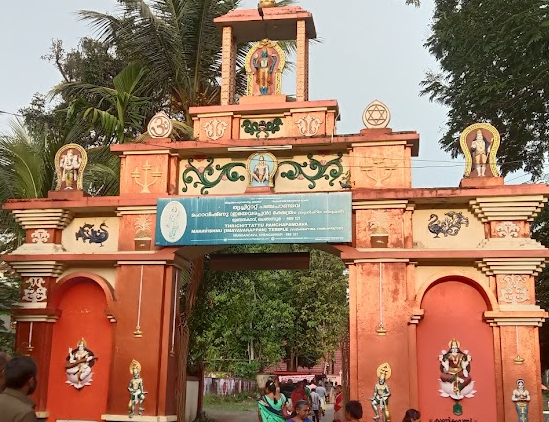The earliest references to the Sri Imayavarappa Perumal Temple can be found in the hymns composed by the great Alvar saint Nammalvar around 800 AD. Stone inscriptions within the temple date back to the Second Chera Empire (800 - 1102 AD). In contemporary times, the temple is managed by the Travancore Devaswom Board under the Government of Kerala. Although there are no historical records specifying the exact date of the temple's construction, local legend suggests that it was built by the Devas.
Sthalapuranam :
The temple is commonly referred to as "Thirucchittraaru" by the locals and is also known as the "Perumal Temple" or "Vishnu Temple."
According to legend, the Perumal took the Mohini Avatara to protect Lord Shiva from the demon Padmaasuran. Padmaasuran, the son of the demon Sugan, received a boon from Lord Shiva that anyone whose head is touched by his head would be turned to ash. Fueled by the desire to kill Lord Shiva, Padmaasuran sought the help of Sriman Narayanan. Despite attempts by divine beings like Rambai, Oorvasi, and Thilothamai to distract him, Padmaasuran remained focused on his goal.
In response, Sriman Narayanan assumed the enchanting Mohini form and appeared before Padmaasuran. Captivated by Mohini's beauty, Padmaasuran eagerly followed her instructions to bathe in the tank (Pushkarani). As he applied oil to his head, his own touch transformed him into ash. Thus, Sriman Narayanan, in his Mohini form, saved Lord Shiva and affirmed his presence.
The deity of this temple, Imayavarappan, is depicted in the standing posture (Nindra Thirukkolam) facing west. This deity is associated with the Mohini Avatar and is believed to offer blessings in the role of a father figure (Appan).
To emphasise the equality of Lord Shiva and Sriman Narayanan, a large Shiva temple is also present at this site. The temple's significance is further highlighted by the fact that Dharman, driven by remorse for his actions during the Bharatha war (Mahabharata), dedicated himself to the construction and worship at this temple. During the war, Dharman had loudly proclaimed the death of Ashwathaman, causing Dronacharya to die from grief. Feeling guilty about this deception, Dharman sought redemption through his work on this temple, honouring Imayavarappan and seeking spiritual atonement.
